Photo of Doolittle taken at Cannes by James Taylor Nikon D3 All photos in this post taken with a Leica Digilux 2 unless otherwise stated.
It’s been over five years now since I first bought my Dana 24 and in that time it has crossed the Atlantic from West to East, visited three continents and sailed over 10,000 miles. It is also my year round home. It would be true to say that I am fairly intimate with my boat, it’s construction and behaviour. What follows is an article about living with a Dana 24.
Bill Crealock the designer of the Dana was simply a genius. When he designed the Dana back in the early 1980s he was about 65 years old and he used all his hard earned experience gained from a lifetime of creating and sailing yachts. The Dana may well have been one of the last yachts designed without the aid of a computer.
Today most boats are designed around their accommodation. With the Dana the hull was designed first to be seaworthy and efficient with the accommodation being cleverly designed to fit within afterwards. The Dana is also built to a specification and not to a price and because of this she could never be described as a cheap boat. A new Dana from Seacraft (the now makers of the Dana) will set you back about $150,000 which is a lot for such a small boat. Secondhand ones start from about $50,000 if you can find one as they get snapped up pretty quick.
A jaunty sheer and a traditional look. The Dana might be a practical boat but she’s noticed everywhere she goes and passers by always comment positively.
When a boat is designed with accommodation in mind and the hull shape created afterwards all sorts of undesirable characteristics come to light. Because people insist on aft cabins these days, sterns have become wider and wider making steering the boat difficult and possibly dangerous in heavy weather situations. However this problem is solved by the latest auto pilots which can steer for days on end without losing concentration or getting tired. The problem arises when the auto pilot inevitably packs up and the hapless owner is forced to steer without it.
It’s facts like this that are not apparent to people new to sailing but seaworthyness and easy steering are basic traits that all yachts should possess. Many people will not even consider the Dana because it has no aft cabin or is only 24 feet long. The misconception being that big boats are better, more comfortable and faster. This is only basically true. A well designed small boat can be much better than a poorly designed big boat.
Something else that the new sailor may not realise is the importance of a product that has been built to a specification and not to a price. Going to sea should be taken seriously and many modern boats have far too many compromises to safety because of the need to compete in the market place. One has to look a bit closer than skin deep to see why this is important.
Most modern boats work very well in moderate conditions but there are times at sea when the conditions are truly horrendous and it’s at times like these you will realise just how important it is to be aboard a solid well built boat you can trust. The Dana instils confidence with it’s quality feel and solid build.
So the Dana is not for everyone but if you respect the sea and want a practical, competent, safe and very comfortable small yacht, then take a closer look.
The first thing one realises is that the Dana may only be 24 feet long on deck but in every respect she feels much bigger. Most visitors are surprised to learn that the boat is so short, they normally put her length at nearer 30 feet. The interior is Crealock at his best. An open plan accommodation that allows a heads compartment that is large enough for a sink, toilet and a shower, and indeed has a shower tray already fitted as standard, it sleeps 4 very comfortably, two in the forward V berth and one either side on the saloon bunks, your feet go into a large space under the V berth. They are hidden behind the cushions at the end of the saloon bunks – See pic above.
The galley has a fully gimbling 2 burner oven and even a excellent, top loading well insulated 100 litre cold box. There is a table that slides away under the front bunk which can seat 4 around it. There is storage in every spare space. It is incredible just how many stores can be packed away on a Dana. Enough supplies for a month can be carried with ease making the Dana much much more than just a weekender. This boat can go anywhere.
Here are all the stores bought for the Transat (food for about 45 days) and yes, unbelievably it all went away somewhere with room to spare.
Most people will look at two things when choosing a boat. The price and the length but this is an inadequate way to judge any craft. We need to look closer and not just at the quality of the build or the fittings used in it’s construction. A good design is as important as a good build. Even the most beautifully constructed yacht will fail if it’s a poor design.
The problem for designers is that if they have done their job right in the first place, you will never know how good the design is because bad design gets noticed but good design doesn’t. For example, there are many boats which are so badly designed that water can collect on deck or in the cockpit. There’s nothing more annoying than having to mop up a puddle before you can even sit down. This is bad design and it is more common than you might think.
Water doesn’t collect anywhere on a Dana, all the surfaces and locker openings have angles or deep gutters to allow the water to flow away. The Dana takes it one stage further though. All the water that collects on the deck runs out through two scuppers on each side of the hull. What this means is that there are no streaks of dirt down the hull as you will find on many modern boats. Even the teak rubbing strake has a groove cut into it so that drips of water fall from the strake instead of running down the hull and making streaks. You would be amazed at how many modern boats have omitted this basic and sensible feature.
There’s more. There are no visible seacocks on either side of the hull. They are all either below the water or exit through the transom. This makes the hull much tidier and since there are no streaks either, thanks to PSCs water manipulation system, the hull remains clean at all times. This is more than just helpful, dirt and grime will damage gel coat given time so by staying clean, it stays good looking and shiny for longer.
Most Danas have cream coloured hulls with a contrasting top strake. I think this is unnecessary. They do it because it breaks up the hull and makes it look longer. The only problem with this is that it makes the already fairly boxy cabin look higher than it is. I solved this by not having one.
While we’re on the subject of design lets look at some of the details that you just won’t find on other production boats. The high stanchions sit on raised pads and are not placed directly on the deck, this helps to stop water from getting into the boat should the sealant fail. On the foredeck there is a raised centre moulding. For a long time it had me puzzled. Perhaps it was to reinforce the foredeck? In fact it is there as a foot hold. Clever stuff.
Other things that might not be so obvious are the numerous and large cleats on deck. Every fitting on the boat is bolted through with backing pads. All the fittings are made of solid bronze, including the 8 opening port holes.
Another good bit of design that you might have missed is the simple fact that at anchor, the Dana does not slap her arse into the waves. So many modern boats have ‘sugar scoop’ transoms, I suppose to allow a convenient swimming platform but when the boat’s stern falls on a wave it crashes down sending out a blast of water every time. The noise this makes is most disconcerting and frankly annoying. It’s hard to relax with a noise like this. The Dana has no stupid sugar scoop, she has instead, a simple and seaworthy flat transom.
The Dana does come as standard with a swimming ladder whose bottom step goes far into the water making getting in and out of the water a doddle although it does make getting on and off from the stern at the quay rather inconvenient. The Dana is an American boat however and they generally moor alongside and not stern too. Here’s yet another nice feature: The life lines come off on either side of the cockpit and at the stern making getting aboard, no matter how you are tied up, very easy indeed.
One of the best things about the Dana is that it is resistant to rolling at anchor. My last boat was simply dreadful and I’ve seen many small boats rolling so badly one wonders how the occupants can survive with their sanity intact. There is nothing more annoying than a boat that rolls at anchor. There are things you can do to try and alleviate the rolling but there is nothing better than a hull form that stops it happening in the first place. To me, this is one of the Dana’s best features. We do a lot of anchoring so it’s very important that the boat is stable.
Construction
Fresh out of the mould. Incredible finish.
The Dana weighs about 4 tons and that’s a lot for a 24 foot boat. The lead ballast alone weighs 1.4 tons, or about 40% which is quite a lot by today’s standards. There’s no skimping on the materials of a Dana. The gel coat is sprayed on to a generous thickness. I can tell this from some of the cutouts I kept from where sea cocks have been fitted. The gel coat appears to be about 2mm thick! This is good news as it means that it can be polished many times before wearing through.
This photo shows a cut out which came from the Transom when I cut a hole to install an electric socket. It is a full 28mm thick!
Many modern cheap boats are made using only a chopped strand mat sprayed on with a time saving gun. The Dana is completely hand made using a variety of different cloths and then hand squeegied to get the very best cloth to resin ratio. The layup is generous indeed and the Dana’s hull is much thicker than any other contemporary boat of the same length. The first layer of resin is Vinylester which is more resistant to water than plain polyester and on top of this already over the top build, four coats of epoxy paint are added to further protect against osmosis.
This is a photo of the inside of the Dana mould. It has a removable rear section that allows the boat to be extracted.
A detail perhaps not fully appreciated is that until recently all PSC boats were laid up in open sheds in California (they are now in Carolina) where the humidity was always low. The perfect environment to layup a fibreglass hull. No wonder PSC offered a 10 year hull warranty. To this day, I have not heard of one PSC yacht from any era having osmosis.
Having moulded the hull, an inner liner is glued in to further strengthen the structure but this inner liner does so much more. It incorporates the water tanks, engine beds, fridge, bunks and the floor. It is a very clever bit of design. The liner is bonded in everywhere it touches. This obsessive attention to detail makes for one incredibly strong boat. The bulkheads are fitted and glassed in as well, and in places they are also bolted in. Often it’s the bulkheads that give way on modern yachts. This is something I just cannot imagine happening on the Dana.
This photo shows a Dana 24 with the inner liner bonded in. Note also the protected surfaces, a sign of a boat builder who cares.
The deck moulding is made in a similar way and uses balsa to strengthen and insulate the deck, and plywood in areas where more strength is required, such as winch and stanchion bases. It is then glued to the hull using 3M 5200 and bolted through every three inches or so. This makes for a very strong and waterproof join. There is no flex on the boat anywhere. You can jump up and down anywhere on deck but you’ll see no movement. On a Bavaria 34 I viewed, my 55 kilos was enough to get the side decks flexing as I merely walked on them.
This is the Dana deck mould. Visible in the background are the open sheds where the boats are laid up.
On the way back from the Azores we fell off a wave. We’d had a force six on the beam for a few days and the waves had built up quite a height and on the top of the crest of a particularly big one we fell off it and into the trough 2 metres below. What happened? Nothing much. A huge splash as water was forced out from under the hull and our stomachs left us behind but apart from that nothing. There were no groans, creaks or any kind of indication that the hull was flexing. Nothing fell off the shelves, in fact the motion down below was actually rather mellow and well damped. It’s times like this when you realise the importance of good design and solid build.
The Dana is a heavy boat but that’s a good thing in rough weather. A light boat might be faster but it’s more susceptible to waves and the quicker movement will tire you out quicker. At sea, the weight of the Dana assures a more comfy ride and slower motion.
Things I like about the Dana is the moulded in lead keel. There are no bolts to corrode. The keel simply cannot fall off. The rudder is fully protected behind the Dana’s full keel. This is something that almost no other manufacturer offers anymore but to my mind, a rudder is really important so it needs protecting and it needs to be strong. Modern yachts mostly have the rudder sticking out all vulnerable to damage. It’s done this way because it reduces drag and makes the boat lighter but I’ll take a fully protected rudder every time.
Not only is the rudder protected but it is also very strong and simple. It consists of a strong framework of stainless steel and has been engineered to be self supporting yet just to be sure PSC also fit a hefty bronze gudgeon to support the bottom end. This is one strong rudder. You might think this is simply overkill but in 25 years of making the Dana and 350 examples there are no stories about any that have fallen off or failed. Not many manufacturers today can say the same! Considering how important a rudder is I applaud PSCs efforts.
All the solid bronze seacocks are screwed and bolted in with plywood backing pads. They are all oversized and totally solid. Every seacock is labelled so there’s no mistake about which outlet is which. This is a very simple detail but could be a life saver in certain situations and in any case is a very proper way to do things.
The mast and rig on the Dana is also heavy duty yet simple. Chainplates are chunky and bolted through with backing plates. Another nice feature that might not be obvious is that they are placed on the outside of the hull which has the advantage of making the decks wider and thus easier to walk along and also reduce the chance of deck leaks. The painted alloy mast is deck stepped in a stainless tabernackle that allows for single handed mast lowering, which is available as one of the many options with the Dana.
A Dana under construction.
Because the boat is not built to a price, PSC only select the best products for it and it’s not just the obvious stuff like stoves and cleats, it goes much further than skin deep. For example, PSC use only tinned copper wire for their boats. This is much better and slows down corrosion yet as far as I know, not one European manufacturer uses it. Not only are the cables tinned but they are also oversize. Most manufacturers use the thinnest they can get away with which is fine if you don’t add any further electrics but this seems unlikely. As soon as you add a few new toys there will be an unhelpful voltage drop.
The boat is full of nice little details. For example, all screw heads are aligned, no matter whether they are visible or not. Where the capping is joined PSC fit ‘dog bone’ inserts and I don’t know if it was deliberate but there’s a perfect place for two mugs of tea in the cockpit drains.
So there you have a basic run down of the construction of the Dana. I’ve sailed on and worked on a great deal of boats in the last 25 years and I have never seen anything that compares to the Dana. Actually that’s not true. I did work on a Riva Aquarama for a while and they had taken anality to a whole new level with that but since it’s a speedboat and made of wood, the comparison is somewhat pointless.
Sailing
Often heavy displacement boats like the Dana have a reputation for being poor sailors and it has been said that the Dana doesn’t sail well in light airs. I contest this and blame the many owners who load up the boat with drag inducing additions like mast steps, fixed 3 blade props, bbqs, outboard engines, davits, solar panels etc. If the boat is kept clean and the weight kept out of her ends I have found the Dana to sail well in light airs. It’s true that if there is a chop she doesn’t do so well. The trick is not to ‘pinch’ and to ease the sheets a little. I have surprised many much bigger boats in light airs.
The standard Dana is a sloop with a 130% genoa fitted but many were sold as cutters with a small staysail and a 110% jib. The Dana needs running back stays if you want to use the staysail as a heavy weather sail or the mast will pump. I do not believe that the Dana was ever supplied with runners but there’s a chance that the mast will have the necessary fitting already on it so fitting them is no hardship.
With some breeze there’s no stopping the Dana. She sails as if on rails. I know it’s a cliché but she does. She has quite a lot of sail area for a 24 foot boat and does everything very well indeed. She sails upwind well and although she doesn’t point as high as some more modern yachts, she never disgraces herself. She will point very high but she loses too much speed so I have found that she’s happiest (and fastest) about 40 degrees from the apparent wind.
Sailing to windward her helm becomes heavier but the angle of the rudder is very slight. She makes no leeway that I can discern. That long keel has plenty of bite. Her hull is easily driven and she prefers to sail more of less upright, she will still perform when over pressed and well heeled but it loads up the helm and is quite hard work so it’s simply better to pop a reef in since she’ll go almost as fast a lot more comfortably with less sail. Often in a good breeze we’ve averaged 6 knots to windward.
With the wind on the beam she sails beautifully with very little roll and only a slight heel. Because she has no overhangs, her ultimate speed is limited but she gets to hull speed very quickly and will hold it for weeks on end. It’s like being on a magic carpet ride, so smooth is her motion. Our best speed on a broad reach was over 7 knots. This was a steady speed we maintained. Mind you we had 35 knots of wind, two reefs in the main and the staysail.
Downwind the Dana is a witch. Her easily driven hull slips through the water with an effortless grace and plenty of speed. Even the autopilot can cope which is very unusual, many boats are just too lively downwind but again, that long keel keeps it all in hand. She does roll downwind but the motion is mellow and the angle she heels to not excessive. I have sailed on a lot of boats which roll much worse. I find the best sail set up for downwind sailing is to put the main on one side with a preventer line tied up forward. I then use a telescopic whisker pole to pole out the jib or staysail (depending on how much wind there is). This ‘goosewing’ set up is excellent and the Dana’s long keel means that you can have main sail up and the boat will still steer well. In fact, once the wind gets up, I drop all the foresails and carry on with just a reefed main. Even the autopilot can steer the boat.
On most voyages we can expect to average about 120 miles a day (5 kts ave) and this is most respectable. In light airs many big boats do not do so well.
The Dana has one peculiar trait that I have not yet managed to fully understand. When sailing with the wind on the stern quarter in big waves, she will turn her transom to face the next wave head on, then as the wave passes under her, she turns away a few degrees and goes down the wave obliquely and at speed only to repeat this when the next wave appears. If you have ever read Moitessier you will know that he thought this was a great way to cope with big waves in a storm and the Dana does it all by herself! It’s not a fluke either, it happens every time we are in a quartering sea. Even at anchor she shows a tendency to turn her stern into the waves if the wind is not present. It’s a very helpful and interesting trait as it’s far more comfortable to pitch than roll.
Doolittle is a cutter rig and this set up is very versatile but we also have an MPS which is excellent here in the Med where there are often extremely light winds. For offshore cruising I would always take the cutter rig over a sloop. When it’s very windy, the staysail and reefed main is a good combination. The foresails are high cut so they’re easy to look under and should be high enough to be out of the way of even the biggest waves.
The feel on the helm of the Dana is a little dull. She’s responsive enough and changes direction quickly but there’s little feedback. With the Navico TP30 autopilot it’s rare when I have to take the helm. I accept the dull feel on the tiller because although it’s great once in a while to take the helm of a well balanced fast boat, you soon tire of it after a few hours. The bottom line is that the Dana is built for cruising and not for racing. Small price to pay really.
Heavy weather sailing
Wind and waves building mid Atlantic.
The Dana takes bad weather in her stride and has so well balanced a hull form that she will even sail downwind in a gale under bare poles with just the tiller pilot steering the boat.
The conditions outside might be horrific but down below the motion is very smooth, even in the roughest seas. A good self steering system means you don’t need to be outside in the weather. The boat will take care of herself while you stay below and conserve your energy for any possible emergencies that might occur.
One time we were about 50 miles from Minorca when we were hit by a nasty storm. The waves grew very large and came at us from all directions. It was night time of course and we were lit by hundreds of flashes of lightning. The rain was torrential and horizontal in the strong winds. We set the boat on course to run with it and stayed below poking our heads out every now and then. Not that we could see much, it was dark and the visibility was very poor. As dawn broke and the day got brighter, we finally saw the conditions we’d sailed through all night. To this day I have not seen conditions like it. I laughed (perhaps slightly hysterically) to think that we were there at all. It was definitely one of those, ‘What the hell are we doing here’ situations.
If I had been in any other boat I might have been worried but the Dana is so solid and tough that I knew she wouldn’t let us down. It would be the crew who failed her, not the other way around. At one point we were knocked down. Celia was amazed at the colour of the windows, they were all green. It was because we had been knocked down to 90 degrees and a wave had broken over the deck. What she was looking at was the sea! She was in one of the saloon bunks when we were knocked down but she didn’t even realise what had happened because the motion was so mellow. We popped up in just a moment. By the time I got to the cockpit, any water that had filled the cockpit had already gone through the two cockpit drains.
The only evidence of what had happened was a small dent on the hanging locker door opposite the galley where the kettle had simply fallen off the stove because of the extreme angle the boat had got to and bashed into it. This is one tough boat. No matter what the conditions you feel that she could take a lot more. I wouldn’t hesitate to go anywhere in a Dana. A measure of this confidence is the fact that we don’t even carry a life raft.
25 knots of wind in the Straits of Gibraltar on route to Africa.
Having sailed over 10,000 miles in Doolittle I can happily say that I would take her anywhere and she wouldn’t let me down. The only very slight niggle I have is that once, just once, we were sailing down a particularly steep wave and I was on the foredeck tidying the sails and I felt that the bows lacked a bit of buoyancy. The bow’s entry is quite fine and the bows not particularly flared and there is little overhang. It was just a feeling that I had, after all the wave didn’t even get near the deck and I wondered if in an extreme situation she might want to pitch pole. No one else has mentioned this is 25 years so perhaps I’m just being paranoid.
One thing that the Dana will not do is hove to and it’s a shame because being hove to is an excellent tactic in heavy weather or whenever you just want to stop. Most modern boats don’t do this very well either whereas most old classic yachts do. The problem the Dana has is that she has a high freeboard up forward, a bowsprit and thus a lot of leverage at the bows which catches the wind and then the bows get blown off. Her keel is cut away at the bows and this certainly doesn’t help.
There’s not much that can be done. One can’t change the shape of the keel or reduce the freeboard. So she won’t hove to. At best she sort of sails badly to windward, heading up to about 45 degrees before being knocked off and dropping down to 90 degrees before heading up again. In fact she’s quite happy in nasty conditions like this but she would be better if she would just sit at 45 degrees to the wind. Once with a completely flat sea and a very light breeze, I was able to get Doolittle to hove to for half an hour with just the main sail. I was very pleased to see that she didn’t fore reach at all and merely drifted sideways leaving a massive textbook slick to weather.
This photo shows the Yawl rig as it will be when finished. The current sail is experimental.
The solution I have for this is to turn the Dana into a yawl with the addition of a small temporary mizzen mast. After all, it was exactly what Slocum did with the Spray, and if it was good enough for Captain Slocum, then it’s good enough for me! This little mizzen (Slocum called it a jigger) allows the Dana to hove to perfectly. Not only that but it makes an excellent heavy wind sail when used in conjunction with the staysail. The boat becomes perfectly balanced and can be steered simply by adjusting the angle of the mizzen sail. When it’s choppy this combination allows the Dana to sail through the waves with very little effort.
This photo shows the current experimental rig made from a 40 year old jib found in a skip. It works extremely well.
This mizzen mast is also very helpful at the anchorage. The Dana sails about all over the place when anchored. I don’t really mind but when it’s very windy, the bows catch the wind and she drops downwind and pulls up hard against the anchor and because the boat is so heavy it can have enough force to rip the anchor out of the sea bed. By flying the mizzen, she behaves impeccably at anchor facing directly into the wind as if aground. Another advantage of the mizzen is when you come to pull up the anchor. Without it, getting the anchor up can take time as the boat is either on one tack or the other. The sail also damps the roll slightly when anchored.
Motoring
Doolittle in the Canal du Midi. How many ocean going yachts can also motor along canals?
It’s a sad fact of life that a yacht today needs a motor. Sailing into harbours is usually forbidden and with the amount of traffic at sea these days, a motor has become a necessity. The early Danas were fitted with a Yanmar 2GM20 two cylinder diesel engine producing about 18 hp. This seems a good choice for the heavy Dana.
The later Danas and Doolittle were fitted with the latest 3YM20 engines, now three cylinders and producing 21 hp. I did ask PSC at the time why they fitted such a big engine to such a small boat. It seems that the new range of engines from Yanmar started at 15 hp (2 cylinder) and they didn’t want to go ‘down’ in size so went up instead.
The 3YM is no heavier than the old 2GM so there’s no real reason not to fit a larger engine although I personally think the 15 hp would have been fine but I must confess, there have been a few times when I have been grateful for the full 21 hp that the 3YM delivers. I also like the fact that a 3 cylinder engine is smoother by design than a twin.
The 3YM is longer however and this has reduced the options for stern gear. I wanted to fit an Aquadrive as this is simply the best flexible coupling money can buy and reduces vibrations to almost nothing but there just isn’t the space to do it as the motor is so far back. In the end I fitted a Vetus Bullflex unit which works ok but not as well as an aquadrive.
This picture shows how little room there is for a flexible coupling.
The engine installation is excellent of course. The engine sits on part of the interior moulding which also contains a sump to catch any spills or leaks from the engine. The 60 litre fuel tank lives behind the lead keel under the floor and and is generally made of aluminium. Later Danas are fitted with fibreglass tanks which should last a lifetime.
There are all the usual filters and water separators naturally but also an electric fuel pump which does nothing it’s whole life unless for some reason the engine’s own fuel pump packs up. I love the whole PSC philosophy of carefully thought out solutions to age old problems, but I must say that even I feel that this is over kill. Engine fuel pumps are extremely reliable so I question the need for a back up fuel pump. It might be better to carry a spare engine fuel pump as they are very small and simply change it if it fails, rather than having a heavy, large and mostly useless electric pump in the engine bay. That said, it’s there and maybe one day I will be very glad of it.
All pipes are top quality and reinforced, held in place correctly where necessary. Wherever a pipe goes through a bulk head, it is always protected from chafe by the use of a piece of larger diameter pipe in the hole.
Since my boat has the 3YM I can’t really comment about the way the Dana works with the 2GM as I have only been on an old Dana briefly. What I do remember is that the engine was clattery and noisy. When I first got Doolittle, she was fitted with a 2 bladed fixed prop. With this she would reach hull speed (6.25kts) easily enough and could fight her way through a chop but she wouldn’t stop! This made moving the boat around in a marina tricky when it was windy as you need a bit of speed but then were unable to stop. So manoeuvres had to be done slowly which was fine so long as there was no wind on the side of the boat.
The 3YM was noisy on Doolittle as well. This is partly due to the two bladed prop, the fact there is very little sound proofing fitted to the engine bay, no flexible coupling on the motor but mainly, I think, because the hull on the Dana is so dense that it transmits sound readily. We know this because we can often hear dolphins calling long before we see them.
The first thing I did was fit Halyard sound proofing to the engine bay. I then fitted the Vetus Bullflex shaft coupling and finally a 3 bladed feathering Kiwiprop. This helped a lot but it’s still not the quietest or smoothest engine installation I have known. My friend Gus has a PSC Flicka and this has a single cylinder Yanmar 1GM engine. Even from new it was a noisy and clattery installation. Since then Gus has fitted an Aquadrive, sound proofing and a 3 bladed prop and it is much improved but like Doolittle, there’s no shutting it up completely. It’s the down side of owning such a solid boat!
With the 3YM engine there’s plenty of power for moving the boat in the marina. The Dana can be made to turn almost in it’s own length, she is really very agile. She will happily go backwards as well. However if there is wind on the beam of any strength then you have a problem. The cut away forefoot and all that freeboard means that the bows will get blown down and there’s not much you can do about it.
Having the Kiwiprop helps a lot and I can now confidently moor Doolittle in the most demanding conditions. I can get speed up in moments but more importantly I can stop the boat instantly as well. The power of the Kiwiprop in reverse is awesome. Often moving the boat with the old two bladed prop was impossible, the prop just didn’t have the bite and the boat was too heavy.
Manoeuvring the Dana is made easier by a tiller that lifts up and allows you to stand in the cockpit and look right along the boat. Most Danas are fitted with twin lever engine controls which seem very complicated to me so fitted to Doolittle is a removable handle Spinlock system. Incidentally the twin lever system invalidates the engine guarantee so I never did understand why PSC fitted them. It must be an American preference thing.
The hull of the Dana is very easily driven and at speeds of up to about 5 knots there is virtually no wash at all. With just 2200 rpm we can motor at 5 knots on a flat sea. This uses about 1.25litres an hour so we have a range of about 40 hours which isn’t huge but then this is a sailing boat! Considering the size of the engine and the weight of the boat it’s not bad fuel economy really.
Another feature of the Dana that is worth mentioning is the fact that the cut out for the prop is placed in the hull and not the rudder. All the boats I have sailed on that have a cut away in the rudder have had problematical steering. By not cutting into the rudder, the flow over it is always clean. Nothing affects a boat’s steering more than a hole in the rudder!
There’s plenty of room behind the engine for a decent sized hot water tank. The one I fitted is a stainless steel 20 litre version that heats water from the mains or from the engine. It only takes about 15 minutes to heat up and there’s more than enough for two very generous showers.
Living aboard
This picture shows the Dana’s spacious oiled teak interior. Over 6 foot of headroom and even a table that slides away under the V berth.
For two the Dana is a perfect boat. We might live on a 24 foot boat but both feel that we have as many comforts as any landlubber. In port we sleep on the large V berth forward. It is a full 2 metres long and wide, tapering as it goes forward. The foam is latex and even after 5 years of being slept on it’s lost nothing of it’s springyness and comfort. The latex foam was a $400 option. Money well spent. The V berth is a supremely comfy bed made all the more pleasant by having the forehatch directly above one’s head. I often wonder how many people get to fall asleep while looking at the stars. It’s by far the best bed I’ve ever owned. Under the bed is a very large locker which runs the whole width of the boat. It’s not the easiest to get to as the two bunk cushions need to be moved out of the way first but for things that you don’t need often it’s a very useful space.
View from the V bunk looking aft.
The saloon bunks are also latex and extremely comfortable to sit on. They also make excellent sea berths, being located as they are centrally in the boat. Because the boat was designed for Americans all the dimensions are generous. Even the saloon bunks are fully 2 metres long and easily wide enough for bottoms and sleeping. There are 3 lockers under each bunk which can take a huge amount of food. They are top loading.
There is over 6 foot headroom throughout the cabin which is pretty good for a 24 foot boat. The floor is almost a metre wide and made of teak and holly plywood. Access to the fuel tank is by a lift out floor board. The tank has a built in fuel gauge which can only be seen by lifting the floor.
Access to the bilge behind the fuel tank is next to impossible. There’s no room behind the engine to get in and there’s not much at the tank end either. Best advice: Don’t drop anything in there! Access to the engine is excellent. There is a large panel under the companionway that comes out and also a very large cockpit engine panel held down with four knurled bronze nuts. Things like fuel filters and water strainers are easy to get at with the cockpit cover out.
Leica M9, 21mm Asph Cabin looking aft. Box under companionway is a replacement for the original steps. Doors are not original either. Originally there were 4 solid teak washboards.
The boat is all teak below. There is some fibreglass showing but it is in no way offensive and simply helps to brighten the interior. If the whole boat was wood it might be a bit much. The finish is oil and not varnish although some Danas were varnished from new, others have been varnished since.
Note: The new Danas made by Seacraft use cherry wood down below. I applaud the ecological benefits of using this fast growing timber but personally I don’t like it. However Seacraft will build the boat using any wood you like.
The boat has a very nice spacious and open feel to it. It’s not poky. The 8 opening bronze port holes and the forehatch let in a lot of light and air if you want. If the Dana has a fault down below it’s the lack of ventilation. This is something that very few modern boat builders consider properly. It’s true that in fine weather the Dana is better ventilated than most boats but as soon as it starts raining you need to close the ports or water will run in from the cabin top.
The problem with port holes is that their frames condensate and drip water down the cabin sides. There’s not much that can be done about this. A better design of port holes would help but no one has attempted this. The ports PSC use now for the Dana are pressed stainless ones which are smaller and give the Dana a squinty look, also they look like baking tins and to my mind spoil the boat completely. In the old days, PSC had their own portholes cast in New Zealand. They even had the PSC logo embossed in the outside frames. I never did discover why they stopped using them but it was a mistake as they gave the boat a nice individual look that no other boats on the market could match.
As hard as they tried, PSC just couldn’t get their hands on an original set of ports for Doolittle so I had to settle for these made by New Found Metals. They are OK but not a patch on the originals but still better than the baking tin specials they use now.
The hatch on Doolittle is a Bomar venting hatch which is not standard, it was something I insisted on. The lockers and cupboards do not have ventilation holes between them, they are all so well glassed in. PSC could have saved some weight and allowed air to pass all through the boat even through closed lockers.
Some of the locker doors are made with slats for ventilation which is helpful but what they should have done is made every locker door like this. I realise that they have to keep the price reasonable and that’s probably why not all the locker doors are vented. Doolittle has flush fitting locker doors using Soss invisible hinges. Early Danas had frames with external brass hinges.
There are shelves on either side of the V berth with removable fiddles. There is room here for most of our clothes. Behind the saloon bunks there are further shelves with removable fiddles and these are perfect for books. On some Danas the shelf is turned into cupboards but I think they make the boat look a bit fussy and cluttered. On Doolittle there are teak slats but on many Danas there is simply a pvc covered panel.
The doors I made to replace the original washboards. The entire assembly lifts out easily and also houses the compass, gps and TackTick log.
The Dana has 4 solid teak wash boards that slot in and a solid sliding hatch made of fibreglass. We soon got bored of fitting and removing the boards so I made some doors which is a much more sensible solution if you live aboard. Under the washboards is a small yet useful locker. Teak steps deliver you into the cabin and these can be removed for access to the engine panel when needed. I always found that they rattled when the engine was running and no amount of wedges would stop the noise for long so eventually I removed them and made a box instead. This box is also a place for shoes, rubbish and recycling. Like most boats, the Dana has no dedicated place for rubbish as standard.
The galley is on the port side by the companion way. There is a two burner hob, grill and oven made by Force 10. Because it’s an American boat it has the American version which is a few inches wider than the European one. It’s an excellent oven with flame failure devices and a spark for lighting the various flames. There is a double glazed window in the oven and the door slides under the stove when open. This simple feature is really needed or the door would stick too far into the cabin to be safe. There is a work top that covers the stove and lives behind in it’s own slot. Very tidy and simple.
Author in the fridge. Most lockers on the Dana are big enough to get into.
Some Danas had a small lift up table to the right of the stove which increases the work surface in the galley which isn’t huge, most of it taken up by the fridge, sink and stove. The fridge lid is sensibly made in two parts hinged in the middle so you don’t have to shift everything off the top to get into the fridge. The fridge is very well insulated with a minimum of four inches of foam all around it. It’s special foam that is poured in a liquid form which then sets. Even the fridge lid is about three inches thick and because it’s a top loader it is even more efficient. Inside the fridge are two clear Perspex shelves dividing the space. The fridge has a 100 litre capacity and is actually big enough for me to get into. Most boats 30 feet long don’t have a fridge this size.
It’s relatively easy to access the contents even though it is placed far aft in the galley. Behind the fridge is a useful cupboard although most Danas use this space to make a space wasting place for plates and cups. When we ordered Doolittle we asked PSC to fit a closed cupboard which has worked well. Next to the fridge is a good deep stainless sink with a foot pump to get water out of the water tank which is moulded in at the front of the boat under the bed. It has a capacity of 150 litres. Above the fridge is the electric panel which hinges down for easy access to display beautifully presented and tidy colour coded wires. The switches used are breakers which simply turn off if short circuited.
Under the sink is a large cupboard taken up mainly by the fridge drain pump and the sink seacock. In some respects I wish that PSC had moved the seacock slightly to allow a more useful locker but it’s right in the middle. They do this because all seacocks should be accessible quickly in the event of a problem. What you don’t want is to have to empty a locker to get to one. It’s also easier for PSC to fit the seacocks centrally as they are easier to fit and connect.
Often one wonders why something has been done a certain way on the Dana but usually there is a good reason for it. I might not always agree that PSC chose the right way but they did at least consider it and then chose the best compromise that fitted into their philosophy for building boats. After all, the Dana is a production boat and costs must be cut somehow. What you end up with is a strong and trusty seaworthy boat that won’t get sunk by accident.
Behind the sink and cooker is a deep cupboard with two sliding doors. It’s a bit dangerous having to reach across a possibly hot stove to get out the olive oil but it’s too good a space not be used for a cupboard but one soon learns to take care! There is also a large locker under the stove.
The Dana is well lit with no less than eight lamps in the cabin. Four in the ceiling and four reading lamps well placed at each end of the saloon bunks. The headlining in the Dana needs special mention. It is made of pvc and has full length zips in it. The zips allow access to the deck, should you need to fit something to it. They can also be unzipped when leaving the boat for a bit of ventilation. It’s very smart and a vast improvement on most manufacturers efforts. Also in the ceiling are two long teak hand holds which are placed parallel to the saloon bunks creating an obvious place to tie the lee cloths to.
Note: The latest Danas made by Seacraft do not have this headlining system which is a shame. They use a series of panels which to my mind spoils the interior of the boat and makes it look cheap. I do not know why they chose to change the old proven system.
Above the foot of the bed is another big locker also big enough for me to climb into, and at the back of that a small panel comes out and gives access to the chain locker.
Opposite the galley is a hanging locker and yes, you guessed it, I can get in that one too! It is lined with cedar and this gives a lovely smell to the clothes hung up in there. In fact we have divided the cupboard with shelves which utilises the space much more efficiently. Above the locker is a useful fiddled space which is used for fruit mainly.
The heads compartment has all you need but is small. This is actually a bonus at sea when it’s rough as you can wedge yourself in when on the throne. The toilet is a Grocco HF. It has a solid bronze base and a plastic pump. It has not been very reliable and has needed repairs a few times. The design is a bit pants and could be improved. The spares kit they sell for it doesn’t contain the O rings you need for the small bronze switch over valve which leaks after a year or so.
There’s a round shallow sink in the heads and a hand pump to get at the water but this was the first thing to get rid of. I have never understood hand pumps since you need at least one hand to use it but how can you wash your hands like this? Not only this but in their wisdom, PSC put the pump on the right hand side of the sink whereas it would have been better looking and more efficient on the left hand side.
There is a locker next to the sink and another under it. Neither of these lockers have vented doors but they should have. Behind the toilet is a very large locker with double vented doors, I suppose for wet waterproofs but we use it for everything but. The battery charger and the inverter are fitted in this locker as they are nearest to the batteries.
There is a shower grate made of teak and a useful and deep sump to catch the shower water. There is a switch by the sink which operates the shower pump which is installed in the stb cockpit locker. There is a filter to catch hairs and stuff before they get into the pump. It needs cleaning regularly. The only aspect of this installation that bothers me slightly is that there is absolutely no way to get at the back of the drain fitting. It was installed before the inner lining was glued in. If ever there is a problem with this I will have to somehow cut a hole to get access to it. However there’s no reason why it should cause trouble for decades but…
The head door is a solid teak frame with teak ply panels held in place with a full length bronze piano hinge and a lot of screws. I can put all my weight on the door no problem at all. The knob is bronze of course and even has a lock on it for those who want a little privacy.
The only complaint with the Dana heads compartment is the ridiculous lack of a step to stop shower water draining straight out of the shower and into the cabin. I don’t know what PSC were thinking about. The door closes into a step in the moulding which is all very well but it doesn’t stop the water. In the end I solved this by cutting about 40mm off the bottom of the door and fitting a step into the moulding which is what PSC should have done in the first place. No doubt it was one of those things that just wasn’t worth doing properly, after all, how many people would actually be showering in there? The answer to that is probably not many, but having spent too many depressing times in cold and filthy Marina shower blocks I was determined to have a shower on my boat.
A step added to the head’s compartment. Before, shower water would simply run out on to the cabin floor! Teak grate comes as standard, as does a pump to empty the shower tray.
That about sums up the interior although I haven’t mentioned the stainless steel pole right in the middle of the table. It is a bit odd when you stop and think about it. How many other people have a metal pole in their living room? I understand the need for it, after all it supports the mast but it is odd. However PSC have used it well as it makes a good thing to grab at sea and it also supports the table by the use of a stainless pin which slots into a hole in the post. The table is big enough to seat four and is strong enough to stand on, I know because I do it all the time. It is teak trimmed with a durable cream coloured Formica. It slides under the bed when you don’t want it in sight and is a very clever solution to the age old table issue on small boats. Under the table are two large sliding drawers and a third locker where the speed transducer is fitted.
The one thing the Dana doesn’t have below is a chart table but I applaud this. Fitting a chart table to such a small boat would have upset the otherwise excellent use of space. Halberg Rassy’s new 35 footer has no chart table and I’m sure that in the future very few, if any, small boats will have dedicated chart tables. After all, with electronic charts and plotters becoming the norm it’s a logical step. If I need to consult or work on a chart I can use the floor or the bed.
On deck
The Dana has a very nice deck. There is a moulded in non slip pattern to the fibre glass which makes much more sense to me than a teak deck does. The side decks are easily wide enough to walk along and getting to the decks from the cockpit is easy to do. The foredeck is spacious enough for sail handling and the front of the cabin makes an excellent back rest for two. It’s simple things like this that make the Dana so excellent. Many modern boats have sleek cabins that cannot be sat against which is a shame as it’s a great place to sit on a sunny windless day when you’re motoring. The autopilot steers the boat and you’re further from the noise of the engine.
There are full length teak handrails on the cabin top so there’s no shortage of places to grab when going forward. There is an excellent light on the mast that illuminates the foredeck perfectly at night.
The stanchions are all 26” high and this adds to the feeling of security. You won’t fall off the Dana easily. The bowsprit allows great anchor options but also makes a great platform for watching dolphins or just contemplating the universe as you sail along.
The cockpit is a great place to be. Many boat designers reduce the size of the cockpit to make a greater space below but Crealock avoided this mistake and the cockpit is long enough to lie down in. The combings are curved and comfy to lean back on. The seats are well spaced so that you have somewhere to wedge your feet when the boat is heeled over.
Crew ‘On watch’. The cockpit is over 6 feet long. Cockpit cushions have since been fitted. ‘Dave’ the Navico autopilot in charge.
There are three lockers in the cockpit. At the stern there is a gas locker which vents over the stern. It is very low and when sailing water comes in through the drain. In the US gas bottles are generally aluminium so a bit of salt water on them is no problem, however in Europe we have steel bottles and they tend to rust up quickly. Mind you, it’s a small price to pay for the safety that a completely separate locker for the gas gives you.
On the Starboard side, the cockpit locker houses the batteries, holding tank, seacocks for the toilet, diverter valve, pump out for the holding tank, bilge pump and the shower drain pump. It’s a busy locker but there is still a lot of space for things like buckets, hoses etc.
The cockpit locker on the port side is virtually empty and can only be described as voluminous. In ours we have: Two folding bikes, 4 bags of woodworking tools, a small work bench, mooring lines, sheets etc, 6 large fenders and even the MPS! Of course if you want a chisel or a tape measure…
One annoying thing that PSC do for want of a simpler solution is to fit the steering compass on the starboard aft end of the cabin which sadly spoils an otherwise excellent place to sit. They normally put instruments on the other side thus spoiling another good place to sit. All the Dana’s I have seen are like this so unless you buy a new one, you’ll just have to live with it.
The Dana has her diesel fuel filler in the cockpit by the companionway. It’s a logical place to put it because there is only a short pipe run to the tank. They also fit the tank breather in the same place and this good in the sense that if you do overfill the tank and diesel comes out of the breather it can be soaked up rather than going over the side but when the tank is full and the weather rough you can smell diesel from the breather. When you’re not feeling well this can be unhelpful.
One of the disadvantages of a small boat is where to put a dinghy but the Dana is lucky in this sense because it has two novel dinghies designed especially for it. For most people an inflatable boat is the best compromise. They can be deflated and either put away in a locker or lashed on the foredeck. If you want a hard, albeit small dinghy there is the Deckster which stows on the cabin and around the mast thanks to a special removable bow section. If that’s not elegant enough a solution take a look at the Stasha which is a very light nesting dinghy that fits perfectly on the Dana’s foredeck.
Some things the Dana doesn’t do
There’s no place to stow anything over six feet long down below. Because the cabin is open plan, it’s all used as a living space and there is no where to even put a boat hook, unless you don’t mind putting it on the bed. On the Pacific Seacraft Flicka, there is a deep quarter berth that is excellent for things like that but the Dana lacks this feature. It’s just one of the prices that must be paid for that large open plan interior.
Actually that’s about the only fault I can think of. Anything else that it doesn’t do is simply the product of being a small boat. After all the Dana is just 24 feet on deck and that is often forgotten. Maybe it’s best to think of the Dana as a 30 foot boat which can go on a trailer or find a cheap place in any marina at any time of the year.
The seacock for the head sink must be closed when sailing on a port tack or the sink can fill with water.
Some known issues
The Dana was designed in 1984 and the then owners of PSC did an absolutely brilliant job on the Dana. It says much for their foresight and quality of work that the same moulds they made 25 years ago are still in use today.
The first Danas cost about $100,000 at the time but later on, a cheaper way of building the hulls was found ( I never did discover what this was – I know the layup and types of cloth were changed and the Dana also lost a bit of weight). The Mark 2 Danas were about $70,000 which although still expensive for a 24 foot boat were more attainable and about 350 have been made over the last 25 years.
PSC went bust shortly after I bought Doolittle and the moulds were bought by Seacraft who now offer the Dana (albeit finished slightly differently ) for about $150,000. It’s entirely possible that PSC were selling Danas at a loss as they made such excellent ambassadors for the company. I can’t see how they managed to make one for $70k. The then CEO Don Kohlmann joked that PSC only made $17 on each Dana sold. Perhaps he wasn’t joking. He also told me that a Dana takes about 2500 man hours to assemble. I can well believe it.
It’s hard for me to know what was going on at PSC when I ordered my boat back in 2005 but from what I have gleaned all was not well there. The original owners had sold PSC to a Singapore company that ran the company for many years. Then about when I ordered Doolittle it was bought by a guy who sold Porsche and Audi in Beverly Hills. Perhaps he thought PSC was a cash cow and he’d make a packet but I think he soon tired of the idea and lost interest.
Judging by the many mistakes and shoddy work done on my boat I think there was more going on that I can ever know. All I know is that I did get my boat and only a week late. When I saw what soon happened to PSC and what a Dana costs now, I consider myself very lucky to have bought my boat when I did.
Mexicans build my boat, deck visible in background.
In fairness to PSC they did their best to make my boat just how I wanted it but they rushed the build although I’d given them a year to make it. The bloke who put the woodwork in the boat must have been half blind or incompetent. Or both. My boat was the last he built. He retired soon after. Not a moment too soon I thought. Even allowing for the fact that I was buying a production boat I was shocked at some of the bloody awful work he did. Thankfully it’s only me that can see these details, they wouldn’t matter or even be noticed by most people. I have since corrected most of his mistakes. All the woodwork that was made in the shop and later fitted was beautifully made.
Despite these cosmetic problems we still launched the boat and after just one week set off home across the Atlantic. Some problems have come to light since but because PSC no longer exist (at least as they were – they are now on the east coast) I have no come back.
Perhaps the most serious of the problems is a cracked rudder gudgeon. In fact it’s not as serious as you might think since the rudder is engineered to be strong enough without it but it’s still a disappointment. The crack is still there but has got no bigger and there is no play in the rudder so for the time being I’m keeping an eye on it. There were other owners who had similar problems. Perhaps a batch of bad castings?
Other Dana issues include problems with the mast step collapsing. This is due to water getting in to the step and rotting out the plywood, then the fibreglass cracks. The solution is to remove the mast and the tabernackle and replace the wood and re-glass the area. For a specialist it’s a straightforward job with easy access.
Often owners have reported leaks by the scuppers on the side decks. The mark one Danas have one scupper, later versions two. They are finished with bronze castings. The remedy is to remove these, dig out all the old sealant and then replace it. Again, a straightforward task with good access.
Fuel tanks were made of aluminium until recently and after 20 years of sitting in bilge water many of them corrode and start to leak. Fortunately, thanks to the good basic principals of PSC the tank is easily removed for replacement.
Some Danas had delaminating bowsprit problems. PSCs solution was to leave a bigger glue gap working on the assumption that they didn’t use enough glue. That’s not the problem however. It seems more likely to me that three laminates just isn’t enough. It would have been better had they used 5. Wood is an amazing material but it absorbs moisture and changes shape slightly all the time. Depending on how the wood was cut and the direction of the grain will have a huge effect on how much and in what direction it moves. The wood can move so much that the glue line can simply break. By using more laminates you introduce more glued area and the chances of the sprit delaminating are reduced. I also noticed during my tour of the factory that no additives were put into the epoxy which leaves it hard and brittle. One reason for adding fibres is to give the glue more flexibility.
Here is a 2003 Dana with chromed bronze fittings and varnish. Shows the way the substantial bowsprit platform is fitted on top of the bowsprit. Ugly, wide and uneven glue joins visible.
Another problem with the bowsprit is the bowsprit platform which is bolted directly on top of it. This is one of those classic ‘It will do because any other way is just too complicated’ decisions by PSC but it does make getting to the bowsprit to varnish it almost impossible. So what happens is that it doesn’t get varnished, water gets in and the bowsprit starts to rot.
On Doolittle, I soon modified the platform to mount on either side of the bowsprit. I did this for many reasons. It makes the boat look better, it reduces weight and windage up forward and it means you can see the bowsprit for maintenance. The capping is now visible whereas before it disappeared under the platform and a nice ‘boaty’ type feature was lost. It also lowered the lifelines forward a little which also improved the boats lines.
Doolittle’s modified bowsprit platform. Note how the capping ends at the bowsprit. You couldn’t see this before. Better glue lines on this bowsprit and much easier to maintain and inspect.
The staysail track is a bit short which means it’s hard to properly trim the sail on a broad reach. Some owners have had the staysail cut a little higher to rectify this. It’s not a big deal.
Perhaps it seems like the Dana has a lot of problems but these do not apply to all boats only the occasional one. The Dana may be a production boat but it still requires a lot of skill to put one together so it’s not surprising that some boats may be built better than others. As a boat builder of 20 years I can tell you that although she may have some issues, none of them are particularly serious and can be easily remedied. However, they’re nothing to the problems I have seen on many other modern boats. PSC did all the important bits right.
Maintaining a Dana 24
The Dana is a relatively easy boat to look after depending on how much varnish you have! Most Danas have a wooden cap rail and many of them are varnished. However this is not an easy job as the stanchions and life lines get in the way when working and varnishing around the genoa track is a pain, there’s also the bowsprit to consider. Doolittle has her teak bare and untreated. It has never been treated and it never will. My last boat was covered in varnish. I have done my time on that score.
Most Danas have wooden handrails bolted through the cabin top and again, many are varnished. This is a hard job to do well and there is a lot of masking involved. There is an argument against varnishing hand rails because it can make them slippery when wet. Another good reason for not varnishing! Teak is about the only wood that can take this sort of abuse. It is full of natural oils that protect the wood from rotting. However the teak does go grey and if not washed regularly can go mouldy in places.
On Doolittle I wash the teak with soapy water from time to time but I never scrub it. Despite this, the capping is looking very worn in places with raised grain. It will soon be time to sand it lightly and get it flat again. This is the kind of maintenance I like, a small amount every half decade or so.
Pacific Seacraft must have been aware that the exterior woodwork involved a certain level of upkeep so they offered a few alternatives, such as an alloy toe-rail in lieu of the wooden one which although practical makes the Dana look too much like other ordinary boats. I’ll take the teak with all its issues thanks. They also offered a few of the later boats with plastic wood rubbing strakes. And for the cabin top they offered stainless handrails. Again, practical but somehow out of character, cold and unfriendly.
The mast is easy to look after as it is well painted. I keep an eye open for bubbling paint and scratches and take care of them as soon as I get a chance. They say you can’t polish the paint when it dulls because it ruins the paint but I have successfully polished the mast and it still looks good today. personally I believe if you can keep paint shiny then that’s better than letting it go dull and simply repainting it. Anyway, the mast is nearly 7 years old now and still looks shiny.
The hull is easy to clean using a brush on a pole but there are two areas that are impossible to get at from the deck and that is aft on both sides where the transom tucks under. You can get to these areas easy enough with a dinghy however.
Most Danas were finished down below with teak oil rather than varnish. Naturally some were varnished. Doolittle’s interior is done with teak oil so I can’t comment on the longevity and practicality of varnish. I will say this though. I would not like to varnish a Dana interior with it’s slats in various doors and panels in the others. There is a lot of wood down below in a Dana and varnishing that lot would take weeks, not to mention the dust and the mess.
Teak oiling is a far simpler solution. It looks nice, it’s more mellow and comfortable to look at than varnish and it’s easy and less messy. The trick with successful teak oil is to make sure there are enough coats protecting the wood. The factory maybe applied 3 or 4 coats and this is no way near enough. Each coat needs to be allowed to properly dry before the next is applied. It can take weeks to get a few coats on.
I have found that the best finish is achieved by first washing the woodwork with soapy water and letting it dry thoroughly followed by a swift rub over to remove any nibs or bits of dust with the scratchy part of a sponge helps. I apply the oil with a sponge and try to get as much as possible on. I work on small areas at a time. I leave the oil for about ten minutes and then remove the excess with kitchen roll which I have found leaves a nice clean thin coat of oil that soon dries. Repeat this once a week or so until you have a nice regular finish. It can take at least 6 coats before it looks even and not patchy or rough.
The teak oil finish is still good on Doolittle despite living on her for almost 7 years now. I have regularly added coats of teak oil and over the years the teak has mellowed and it all shares a nice warm red/brown colour, except for the bulkhead by the companionway which has gone quite light from the sun. Varnish would have done the same so there are no real disadvantages to oiling. I think at the end of the day it just comes down to personal preference. I’m obviously biased as I hate varnishing but teak oil does protect the wood and that is what matters to me. If in years to come the wood needs cheering up, it’s much less work scraping off dried teak oil than dried varnish!
Cleaning the bilge is one job that is practically impossible to do as there is no way to get to it. You can look at it but with the engine in place that’s about all you can do. And don’t drop anything in there either or you’ll have fun and games getting it out! Luckily the bilge stays pretty clean as the cabin floor is sealed and there is a sump tray under the engine to catch spills.
Apart from these slight issues the Dana is not a hard boat to maintain. All the important bits, like stern glands, motors, pumps and batteries etc are all easy to get at. I would say that keeping a Dana spick and span involves a bit more work than most modern yachts but this is the price you pay to be that little bit different.
Conclusion
I first discovered Pacific Seacraft back in 1994 when I came across ‘Caraway’ a little black Flicka in Cornwall. I fell in love with the boat but when I discovered that PSC also made a bigger version called the Dana, I knew that it was the boat for me. It took 15 years but now I have the boat of my dreams. If I won the lottery I wouldn’t buy a bigger boat. What people fail to realise is how much work it is keeping a boat in shape. It’s hard enough with a 24 foot boat let alone a 40 footer.
‘Caraway’ the mighty Flicka that started it all. Here she is barrelling down wind with a fat bone in her teeth.
The Dana is so small that I can easily sail it singlehanded. I don’t need crew, I can just up and leave at a moment’s notice. She might be small but she does all I could ever hope for. Bigger boats might be faster but when you’re so happy and comfy at sea, what’s the rush?
So, a brilliant boat despite it’s 24 foot length. Spacious, comfortable, safe, solid, capable, easy to sail, small enough to be trailered or find it’s way into the smallest harbours, creaks or canals. There is no stretch of water on the planet that the Dana couldn’t get to. Yet it’s big enough to offer real ocean crossing ability at speeds that can surprise.
Pacific Seacraft built the Dana well. Any problems they may have are easily sorted or mostly cosmetic in nature. The basic boats are built to last with the best materials. Proof of this can be seen in the Dana’s high second hand values. You could probably buy a second hand one, use it and care for it for five years then sell it on and not lose a penny. There’s even a Yahoo group for the Dana and a lot of experienced sailors on it who know the boat well and are more happy to share their knowledge.
* Doolittle is now for sale. To find out more, please visit this page
To learn a bit more and see the Danas specifications visit Bluewaterboats.org
Leica Digilux 2. Long exposure, early morning. This image is exactly as it came out of the camera.
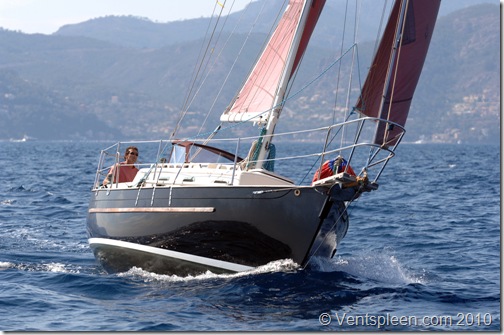
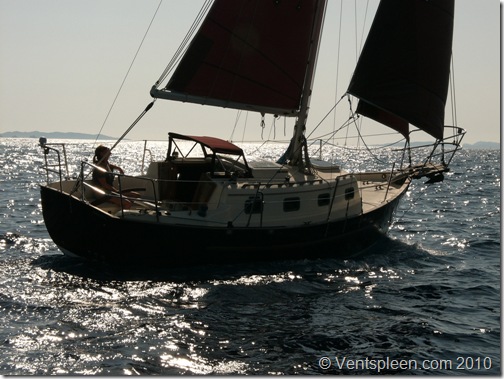
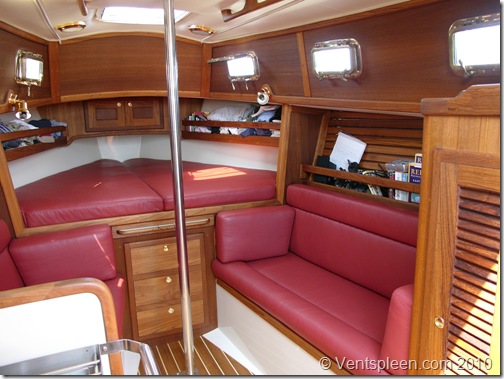
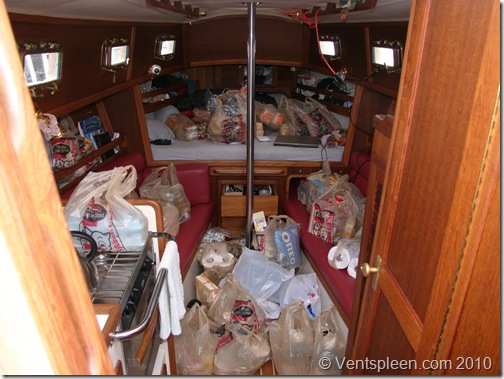
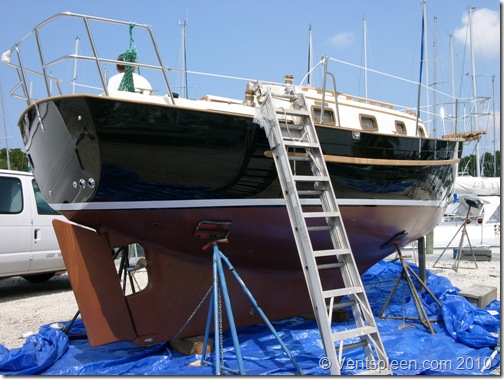
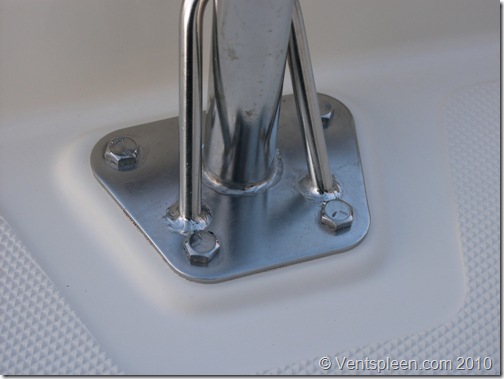
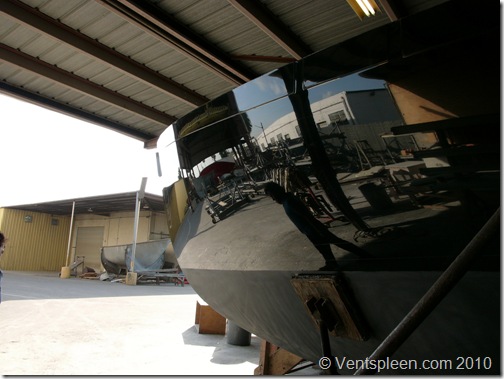
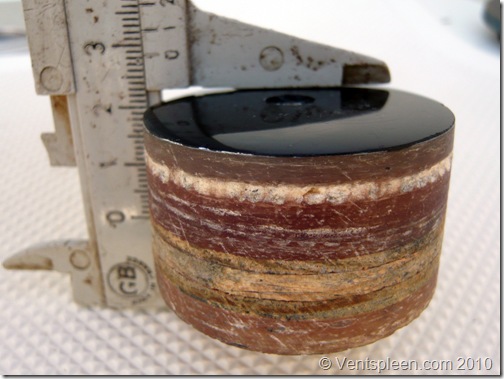
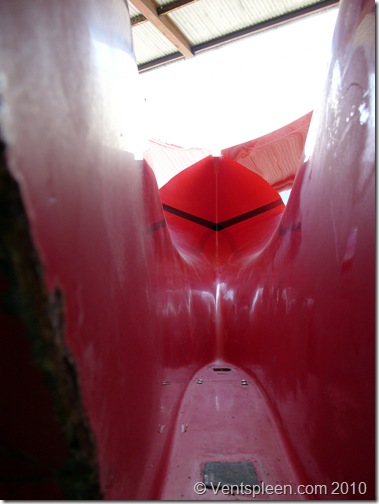
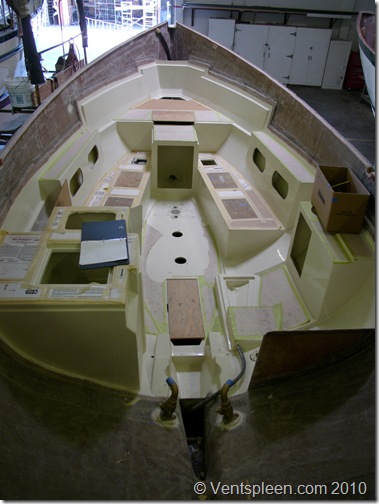
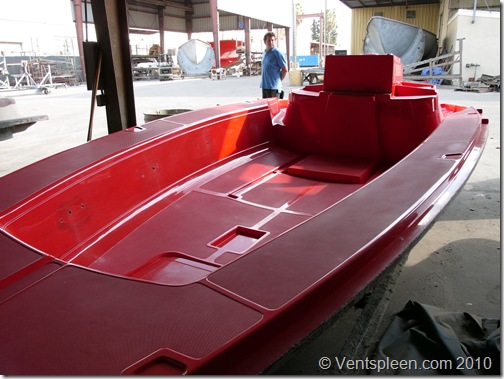
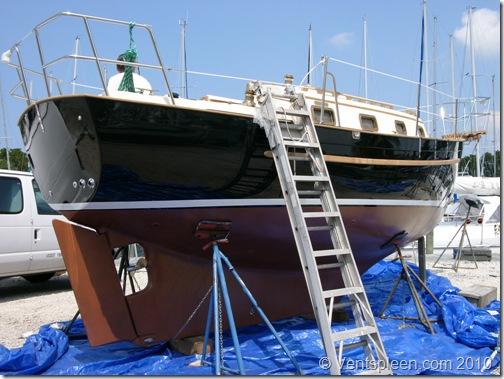
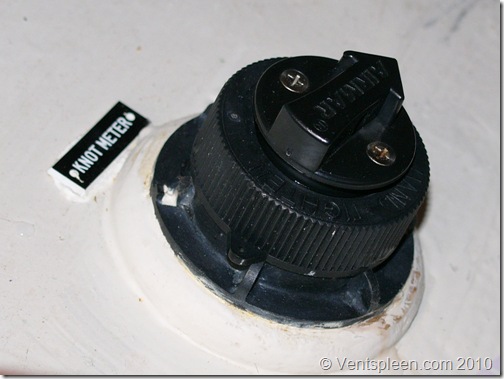
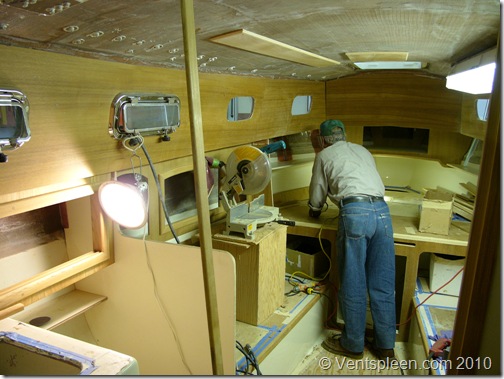
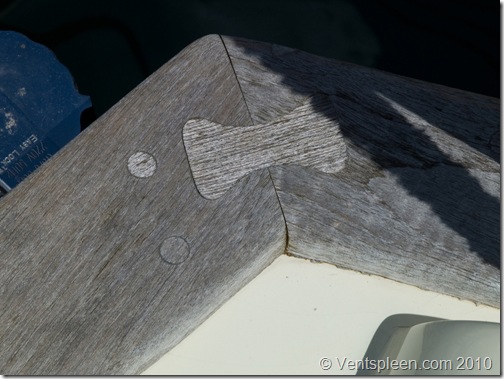
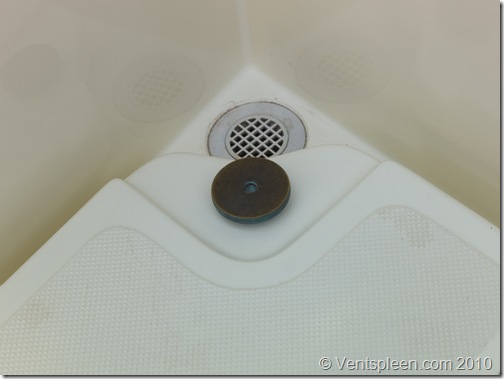
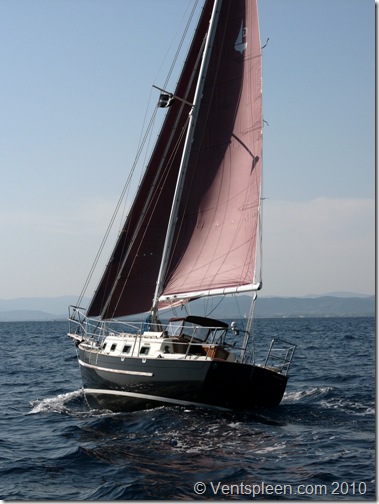
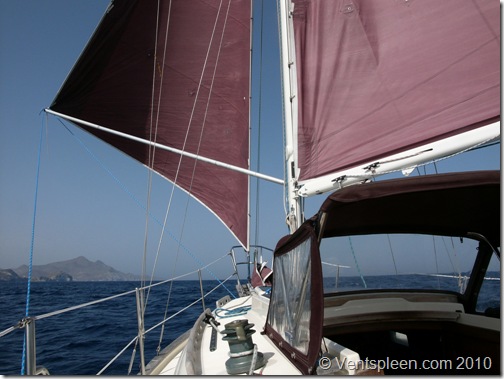
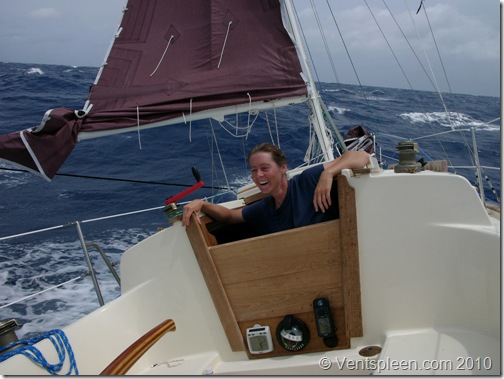
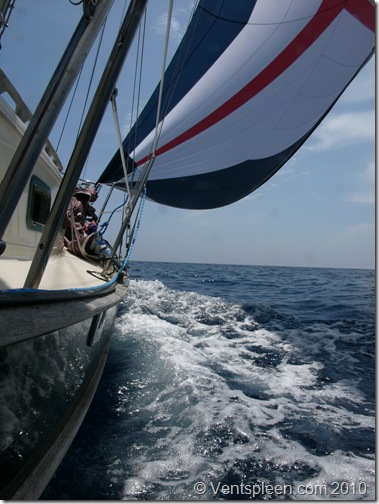
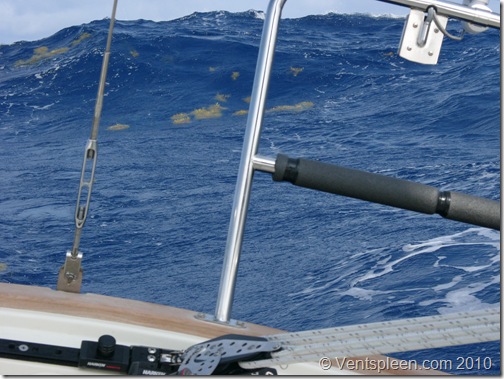
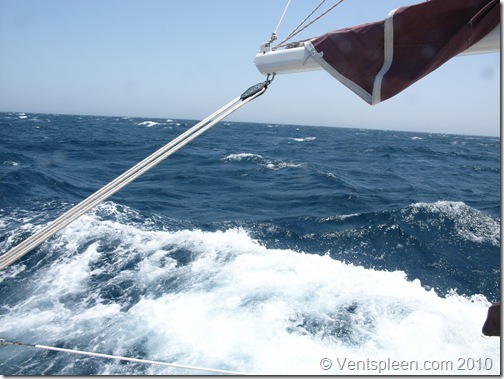
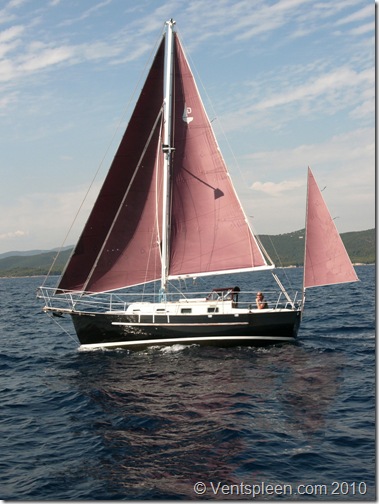
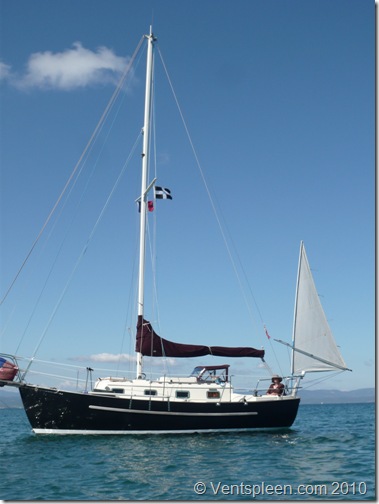
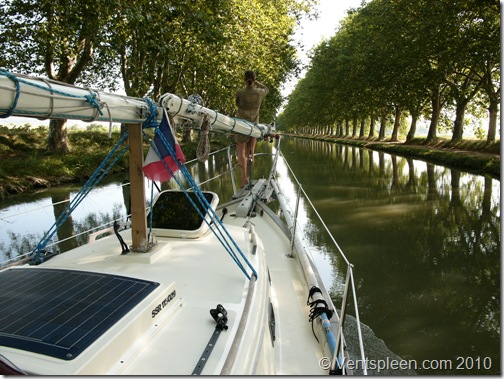
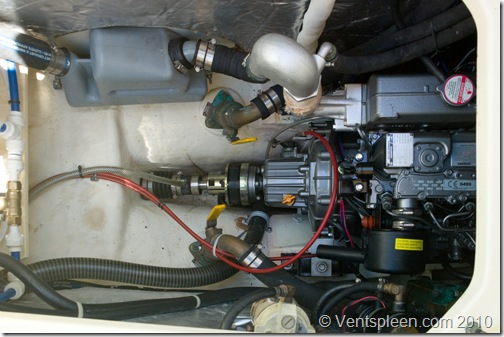
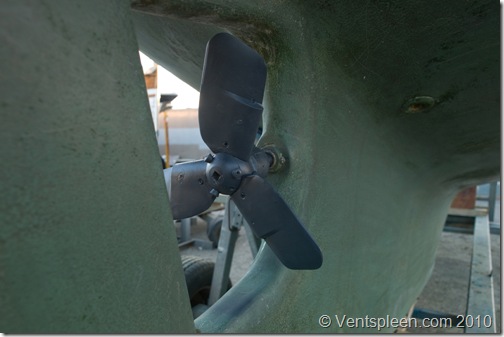
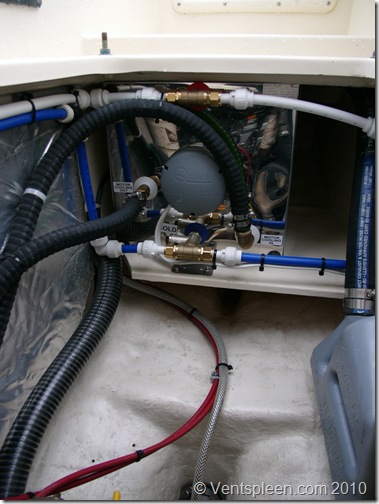
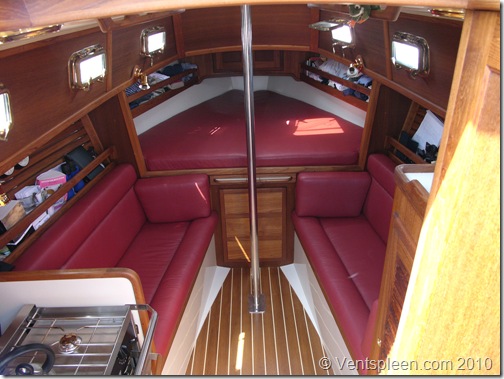
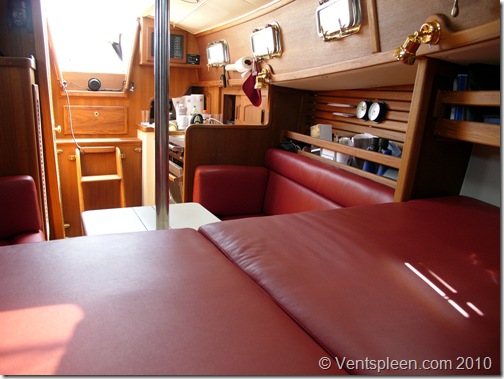
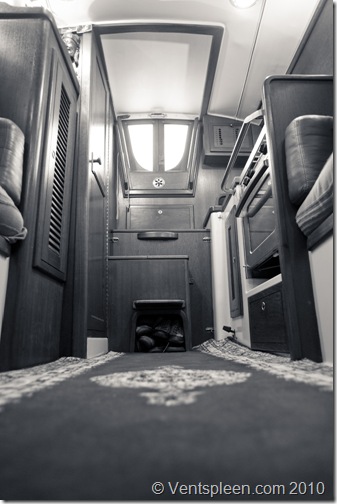
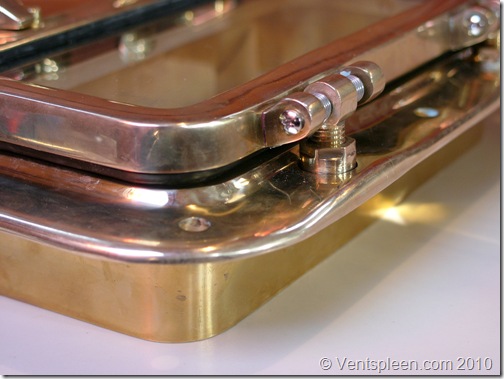
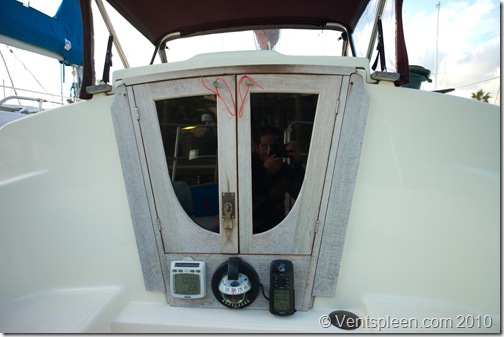
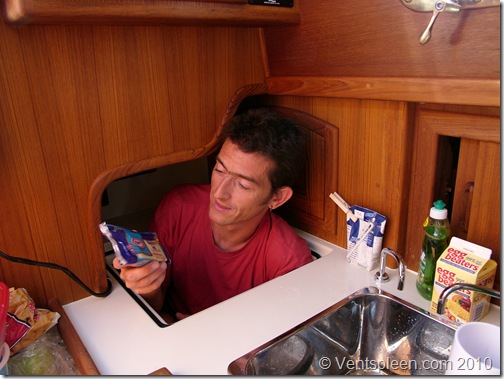
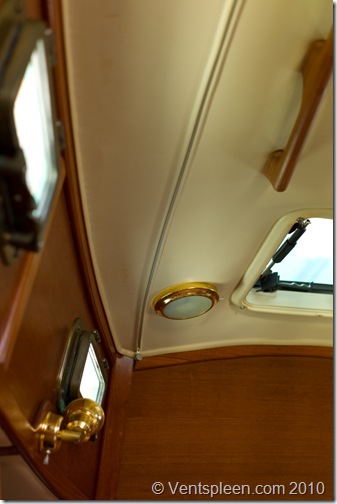
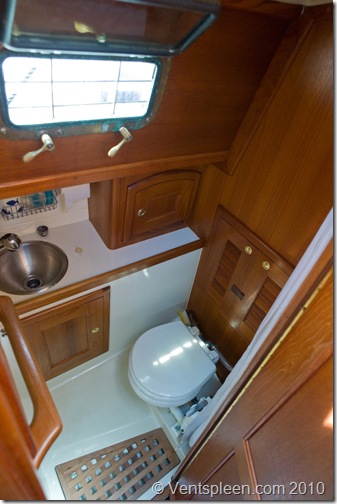
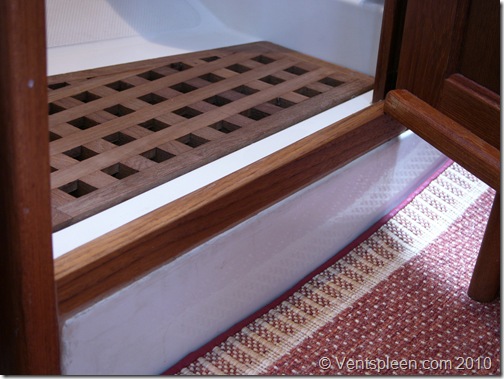
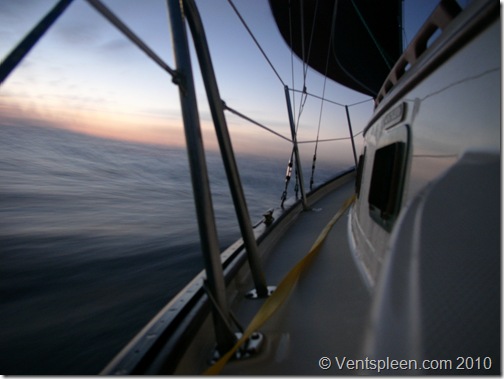
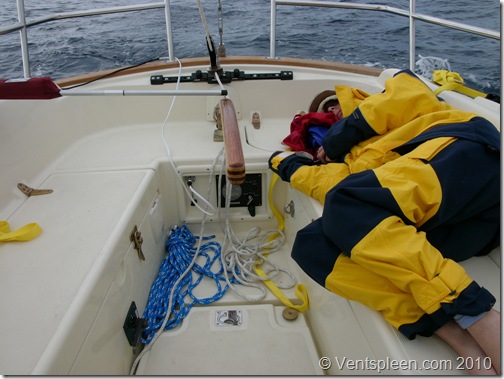
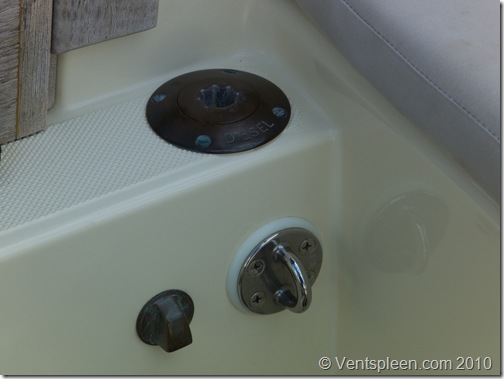
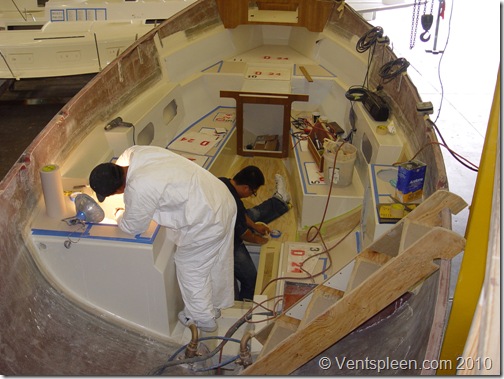
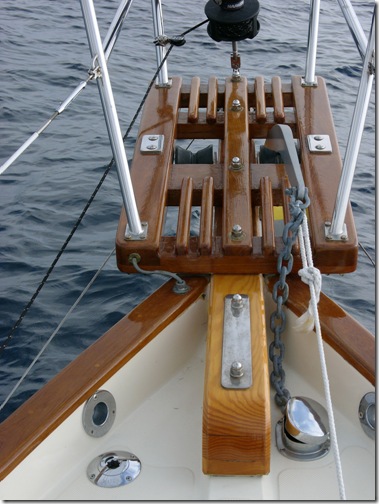
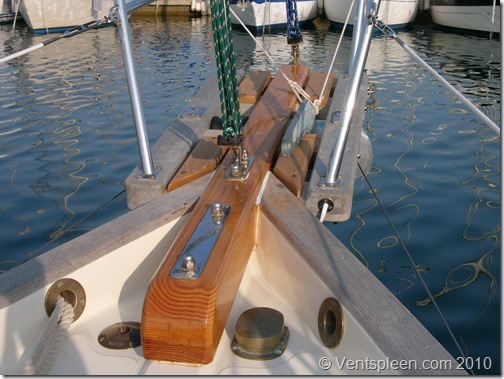
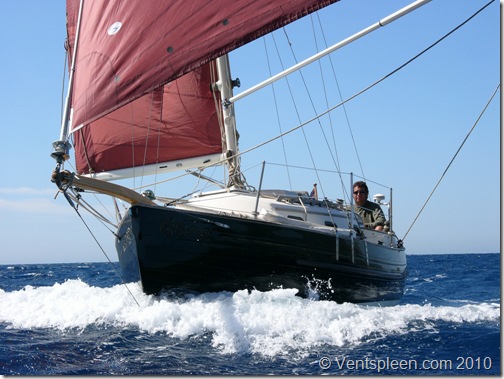
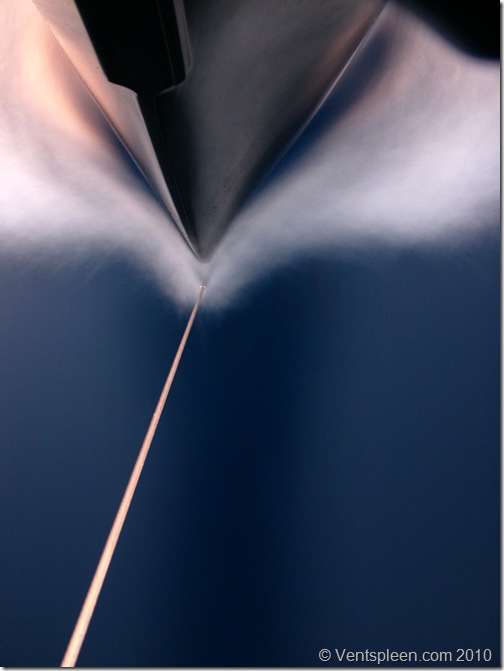
Thanks for this. I recently became fascinated by sailing and joined a sailing club. I’m incredibly jealous of the traveling you’ve done in this little boat. My only reservation about it is that it may be too small for me (I’m 6’5″) so I’m looking for something with a little more headroom like a Westsail 32. Beautiful photos too. Thanks again!
I can understand your passion for the Dana 24 given it is the type of boat you own, but this is one of the best boat reviews for any boat I have read.
Thanks.
I have never seen a more detailed report on a yacht in 58 years of sailing. I totaly agree that the Dana 24 is the perfect little Big yacht. I f I was to change my Colvic Watson 32 Motor Sailor the Dana would be my only choise. Thank you very much.
Pete Gallienne
From one Dana owner to another, this is a very well written piece that certainly does justice to what this vessel is.
Matt
What an excellent review on a fantastic vessel.
If only I can win that Lottery I know the boat I want..lol
Thanks again!
Brent
I congratulate you, a fine report fr a fine little ship. You are so lucky, the perfect compromise for what I need.
Keep lucky.
Tim.
“Doolittle” might just be the quintessential Dana!
In the meantime … I will enjoy my “Graceful Exit” on the Pacific coast. I have learned a lot from you! Keep up the reports on your incredible adventures.
Laurence
Thanks so much for the review. I have owned 5 yachts so far and was looking for a yacht that was small enough for me to handle by myself or big enough to enjoy company. I am so impressed. I love the feature of the head near the companion way…fantastic…hate those that are up the bow of the boat…single handing its a nightmare & and the kettle so close too 🙂
The hatch above to look at the stars in bed i love it…i had this before on one of my previous yachts…fantastic to look at the stars lying back on your bunk on a clear night.
I will be getting one 🙂
Very well writen and instructive! This looks to be a fantastic boat with minimum of headache and maximum of pleasure. Having said that, you seem to have prefered the original bronze portholes on Doolitle; I agree, great for looks but would that not be an enourmous hassle to keep shining?
Cheers,
Wouter
PS: Are you still in the med?
By the far the most comprehensive review I have ever read. Congratulations. The Dana 24 is obviously a fine vessel, but the insights and pictures given in the review are superb. Thanks. Cheers Andy
[…] Dana 24s were fitted with the Yanmar 2GM engines, now they are fitted with the 3YM 20. It’s basically a […]
Amazing review of an amazing pocket cruiser.
I also notice you don’t have a windvane nor a radar. Why not?
[…] the Dana 24 as an example. A very expensive boat for its size. Personally I don’t think it’s expensive, I […]
I googled “Dana 24” after seeing an ad in my regional sailing magazine – your review was the first result. I’ve been fascinated by the PSC Crealock 34 and 37, but reading your review makes me thing the Dana might be all I ever need. Thank you for the in-depth review of both your boat and boat buying experience. It’s incredibly informational and a good read!
Excellent review! I’ve been researching bluewater boats for months, with intent to purchase very soon, and this is by far the most comprehensive review I have come across for any bluewater boat. And the principles in the review can be applied to almost any boat. Thanks!
Looks like you have what I would term a “proper boat” – ie build like a boat should be built.
I too would be proud to own such a vessel.
There seems to be a general opinion these days that if you want to go offshore you need a boat around 40 feet.
The important things in my opinion are not size (within linits) but good design and sound construction.
It needs to be constructed by a builder who dots hid “i’s” and crosses his “t’s” – no shortcuts.
Smaller boats are far cheaper to buy and cost far less in maintenence, are easier to manouvre in confined spaces like a marina – yet a boat around 24 feet can average well over 100 miles per day in good conditions and can be adequately seaworthy.
The hull of my boat was designed by Sparkman and Stevens but deck and cabin by someone else and built in fibreglass.
Ny boat is a modified version on the Dolphin 24 or Yankee Dolphin 34 built in USA. (See website). The difference is that my boat has a longish fin keel amd skeg and rudder whereas the USA boats have a shallow full keel and centreboard.
A beautiful boat that can be made offshore capable. In fact one did the Transpac and another the same as mine was sailed from New Zealand to France via Cape of Good Hope. His average across the Atlantic was 112 miles per day and his best run was 142.
The deck/cabin of mine had a number of bad design and construction faults that I have spent quite a few years correcting, one being water collecting in the cockpit seats and well. Also hatches that leaked.
I am not far from relaunching and will have a boat as good looking and seaworthy as yours – a boat to be really proud of 🙂
delhi…
[…]Pacific Seacraft Dana 24 review[…]…
Graet review Benj!
Small boats are the best. Find out why and read about the Dana’s little sister the Flicka here:
http://www.flicka20.com/Portals/30/articlePDF/small%20boat%20article%2023-10-08.pdf
Great article!
My wife and I sailed our PSC 37 from San Diego to New Zealand in 2004. We had some heavy weather but no anxious moments. Pacific Seacraft certainly made a quality product in their Fullerton plant.
Now that I’m retired I am considering another boat, a Dana 24. Your article has spurred me on!
Thanks
Alan Williams
Vancouver, Canada
Good day,
I would like permission to use one of your picture, would you contact me please? All credit would be given of course!
…Excellent review btw, I have been looking fo rthe ‘right’ Dana 24 and when I find it… Also I love the dark hull wish I cold find one with dark gelcoat like yours.
Cheers
a.
Hello,
I am very surprised that such a brilliantly designed boat cannot heave to. I did some Googling, and found this video that seems to show a Dana24 heaving to – and so I’m just wondering if you had any input on that. Thank you!
http://www.youtube.com/watch?v=wRdKIpvHdNo
P.S. Your review is absolutely outstanding. Thank you for all of this!
Ahoy Peter,
If you look closely at the video you will see that the waves are coming from the side of the boat and not the bows as it should do when a boat is correctly hove to. The fact that boat was also rolling when hove to also suggests that the waves were coming from the side.
When a boat is correctly hove to it should be fore reaching very slowly (about half a knot) and it should be pointing to windward (about 50 degrees of so). The slick produced should be ahead of the boat not alongside. The idea being that the slick, being ahead of the boat, will stop the waves breaking before they get to the boat.
I was wondering if you had more pictures of your boat? It is set up well, and clean.
Ahoy Jon,
I have loads more pictures of my boat. What did you have in mind?
Cheers
Benjy
Thanks for the great review, Ive fallen in love with DANA 24.
Thanks for this fantastic review of the Dana 24. I used to have a Pearson 26 in Florida, which was fine for day sailing but not built heavy duty like a Dana. I was looking for the perfect pocket cruiser and I have now found it. My wife and I are now saving for a Dana of our own. Watching the Doolittle video has us drooling. Damn she’s pretty! By the way could you tell me the name of the band playing that fine music on your video? Thx again!
Simply fantastic review of the Dana. I am saving up for one right now. Once the kids are out of college and the Mortgage is paid off and hopefullly I can still function properly, this is the one for me. BTW, how small are you? I am 5’6′ but a little round in the hips and in no way shape or form could get into that ice box!
Peace,
Bob